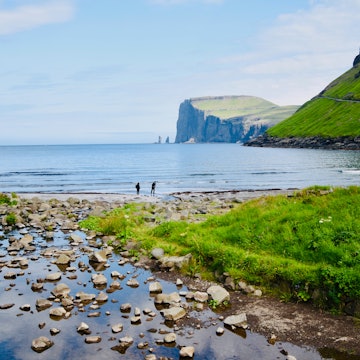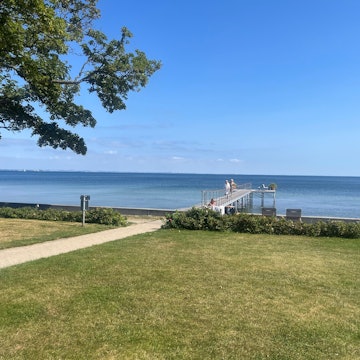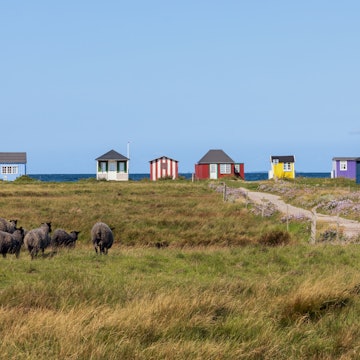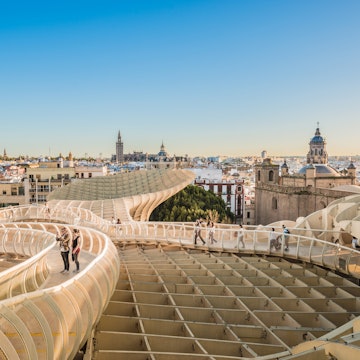

Find your way around Denmark with our guide to local transportation options. Olafur Eliasson/Martin Heiberg
Venture beyond the cool capital Copenhagen and explore more of Denmark. Historic towns, fairy-tale castles, charming islands and sandy beaches are among the many places you could visit, and with relatively short distances and excellent transport links, luckily, that’s easy to do.
Most of Denmark’s cities are compact, walkable and great for biking. Not only is it fun and fast, it's a great way to immerse yourself in a quintessential part of Danish culture. Meanwhile, public transportation is straightforward to navigate. From electrified trams and metro lines to battery-powered boats and buses, it’s affordable, reliable, and often green. Trains are the best way to travel cross country, but there are also long-distance and local bus networks, as well as convenient but more expensive car rentals.
From bikes to buses, here’s our advice for the best ways to get around Denmark.

Ditch the car for pedal power
It’s often joked that Danes are born on the back of a bike. Cycling isn’t just a hobby here; it’s a way of life. Nine out of ten people own a bicycle, and across Denmark, there are over 12,000km (7456 mile) of cycling routes, with 400km (250 miles) of bike paths in Copenhagen alone. The Nordic nation ranks as one of the world’s most bicycle-friendly countries, with excellent infrastructure such as special cycle superhighways and traffic lights, bike-only bridges, and even trash cans that are angled for cyclists to use while on the move. Half of Copenhageners commute by bike, and in the capital, it's often the quickest way to get around.
For visitors, pedaling about on two wheels is not only enjoyable but also sustainable, and helpfully much of the country is rather flat.
Bike rental is widely available
Rental shops are plentiful, most of the bigger cities have local bike-sharing schemes and many hotels lend bicycles to guests for free. Meanwhile, the rental app Donkey Republic operates in several locations across Denmark, including Copenhagen, Aarhus and Roskilde, with its distinctive orange bikes that can handily be picked up and dropped off in different places.

Ride the railways for longer distance journeys
Taking the train is recommended for longer journeys and is a great way to travel beyond the capital. There’s a good network of regular train services connecting Denmark’s major cities and smaller towns. Early-bird discounts or "orange" tickets are available when booking well ahead. Note you need to reserve places for bikes and strollers in advance. However, you can take your bike anytime for free on Copenhagen’s S-tog (suburban rail) network.
Tip: It's recommended to purchase a seat reservation. Trains are a very popular mode of transport, and carriages soon fill up, so it’s worth paying the small extra fee to guarantee a spot, especially for longer journeys.
Download some travel apps in advance
For the best routes, times and prices across trains, metros, buses and ferries, Rejseplanen is a must for travelers. Similarly, Denmark’s train provider, DSB, has an easy-to-use booking app for purchasing digital train tickets. It also now allows you to tap in and out at stations using your phone rather than a physical railcard. The DOT app is another go-to for buying on-the-day tickets.
Get a Rejsekort travel card
To save money on fares, it’s well worth getting a Rejsekort. You can use it across all public transport nationwide, and it’s cheaper than purchasing a paper ticket. Tourists can purchase a Rejsekort Anonymous card for 80kr ($12 USD), which can be topped up on the go. Do remember to both tap in and tap out against the Blue Point at the 'check ind' (check in) signs in transport stations. Press your card against the machine and wait until you hear the beep.
There’s a great bus network too
Buses are a convenient option in Denmark’s cities, and even smaller towns and countryside villages are well connected by regular services. Use Rejseplanen to find routes, timetables and fares, and purchase tickets online or use the Rejsekort travel card.
For long distance intercity journeys, FlixBus is an affordable alternative to taking the train.

Car rentals are convenient but pricey
Hiring a car is a flexible and convenient way to get around, but it can also prove pricey in Denmark. Unlimited mileage often isn’t included, while the cost of fueling up and expensive bridge tolls can soon add up.
All the main airports have car rental desks, and bigger cities also have downtown offices; however, the best deals are usually found through international or third-party booking sites like Autoeurope, Kemwel and Expedia.
In major cities like Copenhagen and Aarhus, you can use car-sharing apps like Green Mobility, which rents EVs by the minute or per hour. For smaller places, GoMore is widely available and works like an Airbnb for car rentals, where you can book and borrow private vehicles directly from their owners.
It is easy to drive an electric car in Denmark
Going electric is a greener and increasingly popular option on Danish roads, especially for shorter distances. These days, plugging in and charging up is a relative breeze, with an ever-growing number of charge points dotted around the country. Most are provided by Eon and Clever, and you’ll need to down their apps for access.
If you do need a cab in Copenhagen, you can reduce your carbon footprint by booking with taxi firm Viggo, which only uses electric cars, or Drivr, which has a zero-emission fleet running on green hydrogen.
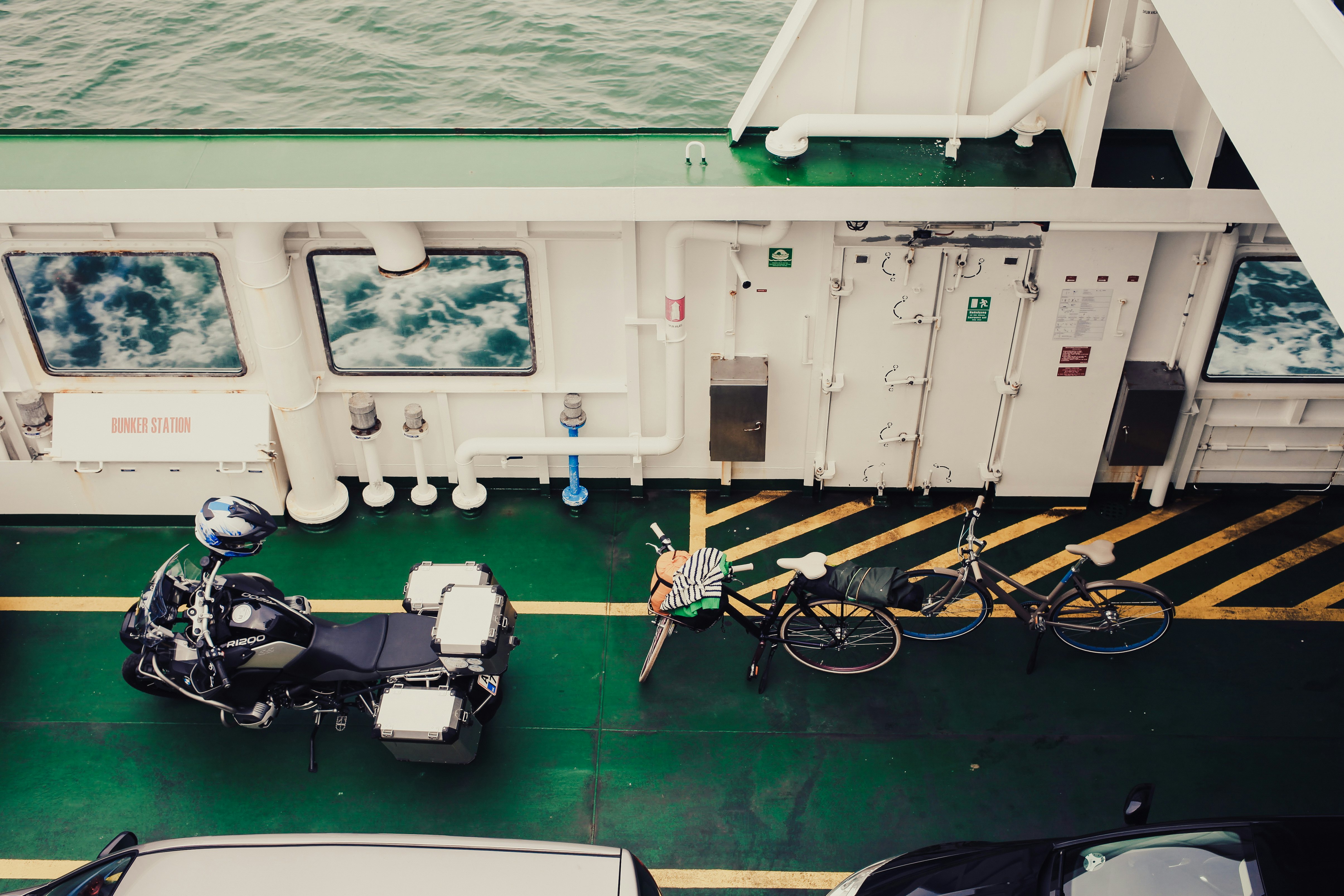
Domestic flights aren't usually necessary
Despite its small size, Denmark has several airports, but for most journeys, flying isn’t really necessary. Among the most popular domestic routes, SAS and Norwegian fly between Aalborg and Copenhagen, while DAT connects various regional airports with Bornholm, a Danish island in the Baltic and a popular summer getaway. Taking off from the water right in the heart of Copenhagen’s harbor, Nordic Seaplanes operate the short hop to Aarhus. Meanwhile, the Faroe Islands, a Danish territory in the Atlantic, are two-hours away by air and Atlantic Airways and SAS operate several flights daily.
Explore the Danish coastline by ferry
Denmark’s coastline is punctuated by well over 400 islands. While Zealand, Funen and Bornholm, are large, there are many charming little isles well worth exploring and among the loveliest are Ærø, Fanø, Læsø, and Samsø. Many islands have ferry connections, and sitting on the top deck while enjoying the sea breezes and blissful scenery is truly a delight. Booking could be simpler, though. In most cases, each route has its own individual booking website.
Major routes include fast hydrofoil that links Jutland with Denmark’s main island of Zealand, and the large express boat that sails to Bornholm from Ystad in southern Sweden. International routes also link Denmark with Norway, Sweden, Germany and the Faroe Islands. If you’re heading to Ærø, check out the battery-powered ferry, Ellen, which charges up with electricity from wind and solar.
Tip: Book well in advance if you want to take a car. Spots fill up fast in summer months when Danish and German holidaymakers head to the islands. Getting on board as a foot passenger usually isn’t a problem.
Accessible travel is good on trains and buses in Denmark
With accessibility improving all the time, Denmark is a destination that shouldn’t hold you back. Trains and buses do cater for wheelchair-users and stations are fitted with ramps and lifts. Conveniently the elevators at Copenhagen’s metro take you straight from street level to the platform. In more rural areas, however, the older ferries are sometimes less well-equipped.








